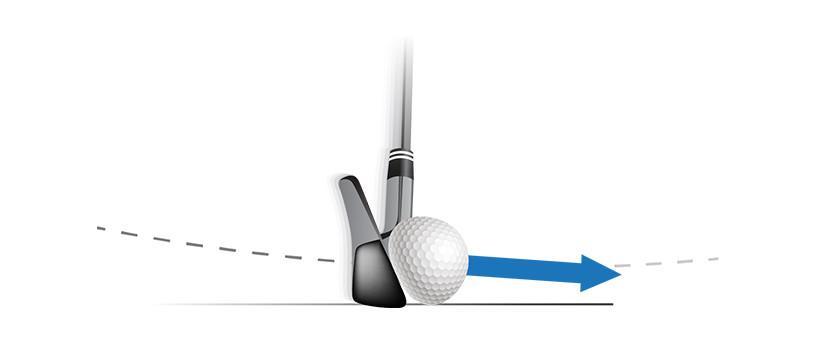
One of the reasons I started Practical Golf was to help put an end to the myths and misinformation that golfers spread amongst themselves. Game improvement advice is often like a game of telephone from your childhood - by the time it reaches you, the information is not very helpful.
To be clear, I'm just as guilty as all of you. A lot of my own personal mistakes in this game are the genesis of the 350+ articles I've written over the past five years. While I don't have all the answers, I've gotten closer to the truth of many essential concepts.
In this article, I will discuss five misconceptions that are rampant amongst golfers. These are all mistakes I've made over the years, and I'll also link to other articles I've written to explore these thoughts further.
Practice Makes Perfect
When I first took up golf as a child, I was obsessed with practicing. I would hit 300 balls at the range until my hands bled. After school, I practiced wedge shots in the yard for hours. It helped me build many skills that are with me to this day, but it also created an unhealthy habit that robbed me of enjoying the game as much as I could have.
At the time, I assumed that all of those hours spent practicing would directly translate to better performance on the course. When I didn't play as well as I expected, I lost my temper and spent a lot of time sulking through rounds. What I didn't know was that golf is a lot more than just practice and that there had to be more of a balance with learning how to play on the course.
The trap I fell into is similar to what many of you experience:
- I assumed there would be a correlation between how many hours I spent working on my game and what I could expect from my scores.
- A lot of my practice time was not focused, and I was merely going through the motions.
A common theme in many of my articles is that golfers need to have healthier expectations on how much they can practice, how to spend that time efficiently, and then balance that with how much time you can spend on the golf course. Unfortunately, one doesn't work without the other. This article helps explore that concept further.
Further Resources:
Your Practice Sessions Are Likely Missing this
How to Practice With a Launch Monitor
Cautious Golf Is Always Better Golf
For a long time, I played what I would call a version of "scared golf." Everywhere I looked around the course, I saw trouble, and it forced me to take a very cautious approach. After learning a lot more about strategy and advanced statistics from resources like Mark Broadie and DECADE, I believe this method worked against me in certain situations, and for me in others.
For the most part, taking a very conservative strategy on approach shots is a good idea. I've shown that golfers don't have as much control over the ball as they think they do. So when a player tries to take aim at the pin and make birdies, it's usually costing them strokes, and resulting in bogeys or worse. In fact, for many of you, I recommend this simple strategy on almost all of your iron shots.
However, playing it too safe also has its consequences, particularly on tee shots. Often times, golfers will take clubs less than driver off the tee because they feel they can hit more fairways. In this test, I showed that hitting iron off the tee versus driver wasn't actually such a winning proposition. The main problem was the loss in distance cost me strokes, and I wasn't as accurate as I believed with an iron.
I now approach tee shots with the mentality that I want to advance the ball as far as possible while avoiding the big trouble (penalty areas, trees, bunkers). Placing too much emphasis on hitting fairways can be a misleading statistic. In other words, landing your tee shot in the rough with a clear path to the green is a positive result.
Swing Smooth and Easy
Swing tempo is one of the most misunderstood topics about the golf swing. In my opinion, the concept is glossed over way too often by the teaching community. Unfortunately, when it comes to the timing of your golf swing, we are usually left with notions like "swing smooth and easy." Phrases like that don't give any actionable advice.
We often marvel at swings like Ernie Els and Fred Couples and comment on how effortless and smooth their swings look. What we don't realize is that they are swinging about 30-40mph faster than a club golfer, but their impeccable timing doesn't make it look that way. Often times, I'll see golfers try to exaggerate a slow backswing (myself included for a long time) thinking it's going to help them become a better ball striker because it felt smooth. Usually, this doesn't help.
I wrote this article on swing tempo a while ago. It tells the story of how the timing of your golf swing is critical and ways you can work on it. To this day, it's been one of the most essential concepts for my own golf swing. Additionally, many readers of the site have reached out to me with the success they have seen using these ideas in their own practice swing.
Building the proper relationship between the timing of your backswing and downswing is fundamental to becoming a better player - just trying to swing smoothly for the sake of it without any meaningful direction is not going to cut it!
Hit Down On It
Somewhere along the way, golfers spread the concept of hitting down on the ball as the best way to become a better iron player. Even I used to tell people, "you have to hit down on the ball to make it go up."
But what does that even mean?
A lot of us take our cues from watching the pros on TV. For the most part, you'll see the best golfers in the world taking huge divots that fly a few feet in front of them. When I was a junior golfer, I used to try and mimic them, and I would slam my irons into the artificial turf at the driving range. It didn't make me any better.
When we refer to hitting down on the ball, we're talking about a concept called angle of attack. The definition is the angle that the golf club approaches the ball through the impact zone. Without getting too technical, here is an image to help illustrate a negative angle of attack:

With your irons, you will either have a negative or neutral angle of attack. But where some golfers get carried away with the "hit down on it" concept is that they will get too steep. Pro golfers have tremendously fast swing speeds, so they can have very extreme negative attack angles with their irons. However, for ordinary golfers, who have more moderate swing speeds, getting too steep will rob them of distance, create problems with turf interaction (think fat shots), and harm their ability to control the ball.
The truth is that most golfers don't actually need to hit down on it that much. You'd be better served with a very minimal angle of attack or even neutral. I rarely take divots, and I've been measured anywhere between a negative 2 to zero attack angle with most of my irons, which means that my irons approach the golf ball at a very shallow angle. And that's OK; the loft of the club will primarily take care of getting the ball in the air.
Additionally, this concept also harms golfers when it comes to hitting their driver. For maximum distance, you want to have a positive angle of attack, which means the driver will be moving on an upward trajectory as it approaches the golf ball. In my guide to increasing driving distance, I explore this concept more.
To summarize:
- You don't need a steep angle into the ball with your irons, a shallow or neutral angle will work just fine for most of you
- With your driver, hitting "down on it" is actually robbing most of you of distance
Take the Break Out of Putts
There are a lot of misunderstandings when it comes to putting. One of the biggest mistakes I used to make, was assuming that if I wanted to make a putt, that I would hit it with more speed to take the break out of it. A lot of golfers believe this is an effective strategy, especially on shorter putts.
It turns out that you're actually making it harder for yourself to make a putt if you add more speed. While you might remove the variable of the slope, you are essentially making the hole smaller. To expand on this concept, I always recommend golfers watch this video to illustrate why hitting putts with the proper speed is still your best option:
Wrapping It Up
Hopefully, I got you pointed in the right direction on a few key topics. I'd love to hear what misconceptions about becoming a better golfer you have managed to disprove in your own journey. Feel free to comment below
We care about the protection of your data Read our Privacy Policy